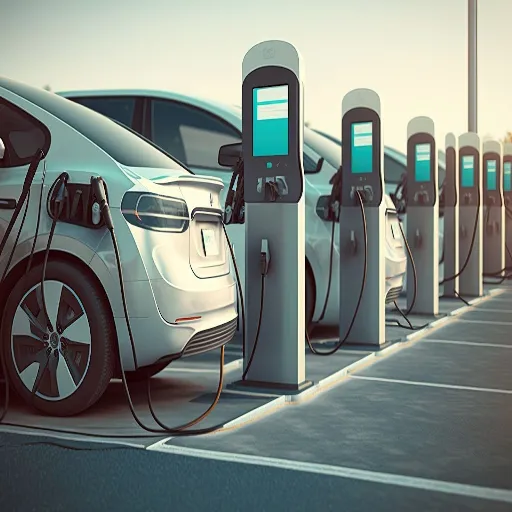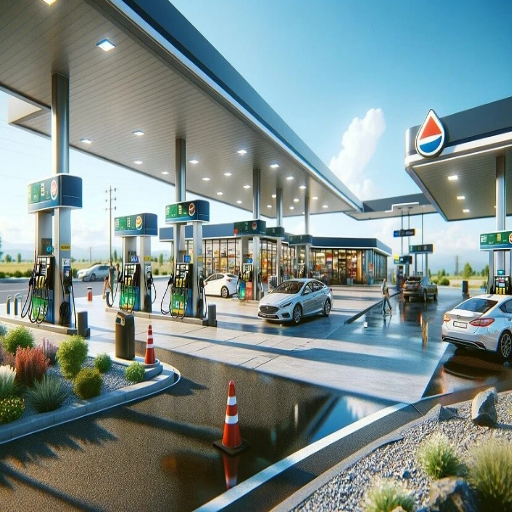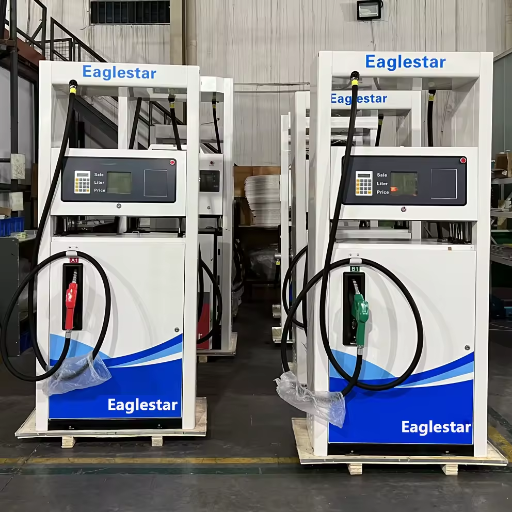Running a gas station seems to be a straightforward way of earning a profit, especially when you think of how often the average person fills his or her tank. However, the situation with how gas stations make money from gasoline sales, in particular, will perhaps astonish you. Gasoline prices get all the attention because they fluctuate, but the profit margin for a station owner on one sale is usually far too thin to consider. This blog will delve into the realities of revenue generation in gas stations, incorporate some economic aspects of gas sales, and shed light on the processes that yield significantly higher profits. By the end of this post, you should have a clearer picture of the business model behind every corner gas station and why fuel sales are just a part of the bigger picture.
Understanding Gas Prices
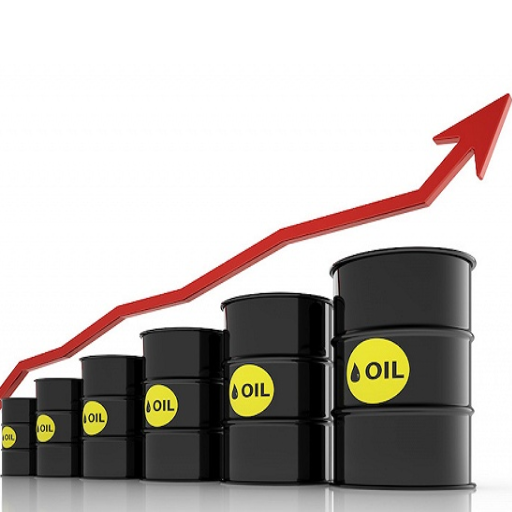
Multiple factors, including the cost of crude oil, taxes, refining costs, and expenses related to distribution and marketing, influence gas prices. Being subject to global supply and demand, the prices of crude oil constitute the most significant portion of the price seen at the pump. Taxes paid for the purchase also significantly affect the price, varying from one state to another. Similarly, refining expenses correspond to the complexity of converting crude oil into usable gasoline. At the same time, distribution and marketing reflect the costs associated with delivering the fuel to stations and operating those stations. These factors help to explain variations in gas prices from one time to another and from one area to another.
The Components of Gas Prices
A combination of global, domestic, and local factors influences gas prices. Crude oil prices represent the most significant component, composing roughly 50% to 60% of the total cost per gallon. Profound changes in global crude oil market conditions, resulting from geopolitical events, natural disasters, and shifts in production levels of major oil-exporting nations, directly affect price levels.
The taxes, on the other hand, play an important role, averaging approximately 18.4 cents per gallon at the federal level in the United States, and this amount increases further when certain states add their taxes. Shopping in Pennsylvania or California could mean paying over 50 cents in taxes alone. The handy collection of dollars goes towards developing and maintaining infrastructure, but it does add some heft to the overall price consumers pay.
Then there are refining costs, which vary based on the complexity of converting crude oil into gasoline and the type of crude oil used. Heavy or sour crude requires longer processing than light, sweet crude, which can sometimes add to the costs. In current terms, refining costs can account for approximately 14% to 22% of the price of a gallon.
Distribution and marketing costs are another primary price driver. Transportation of gasoline to local stations, maintenance of delivery systems, and operation of stations add 10-15% to the final price. Fuel stations located in heavily populated or remote areas tend to have higher operating costs, which are reflected in their prices.
Bringing demand into a seasonal perspective breaks down the significant role it plays. During the summer, travel increases, and refineries produce more of the summer-blend gasoline, a blend designed for lower emissions but higher production costs. The seasonal shift meets newfound demand, which causes a temporary price rise.
An analysis of the components reveals variations in gas prices, not only geographic but also temporal, which are influenced by local politics and global economic factors.
How Market Fluctuations Impact Prices
Market fluctuations, as well as several other factors, including crude oil prices, geopolitical events, and shifts in supply and demand, all influence gasoline prices. Crude oil serves as the most crucial input in gasoline production and is sensitive to global economic fluctuations. For example, as October 2023 approaches, the escalation of tensions in oil-producing regions and the unexpected decision of OPEC+ countries to cut production have introduced volatility into crude oil prices. Such events impact available supply considerations, raising prices when supply diminishes.
Another significant factor that influences price changes is consumer behavior and seasonality. Travelers appear to be presenting increased demands during the holidays lately, which results in higher prices due to increased fuel consumption. Nonetheless, inflation and exchange rate fluctuations may affect the purchasing power of refineries and distributors, whose costs are eventually passed on to consumers as higher prices. One alternative approach to analyzing and forecasting the rapidly changing gas price scenario is to examine these interdependent parameters closely.
Regional Variations in Gas Prices
Gas prices differ from one region to another owing to a combination of local taxes, logistics issues, and distance from oil refineries or distribution hubs. Take California, for example – California always has some of the highest gasoline prices due to strict environmental regulations and high state fuel taxes. Conversely, Gulf States like Texas and Louisiana tend to have lower prices due to their proximity to major refineries and strong local production.
Variances in demand also set their bearing in our price differential. Urban areas with dense populations often experience higher prices during peak travel periods, whereas rural areas tend to exhibit more stable trends. A recent comparison of fuel prices revealed that prices in the Midwest tend to exhibit erratic behavior due to seasonal refinery maintenance. In contrast, those on the East Coast follow a steadier pattern, linked to an evolving pattern of imported fuel supplies. Understanding the regional characteristics will lead to a deeper insight into how geographic localization affects fuel charges for the customers.
Profit Margins at Gas Stations
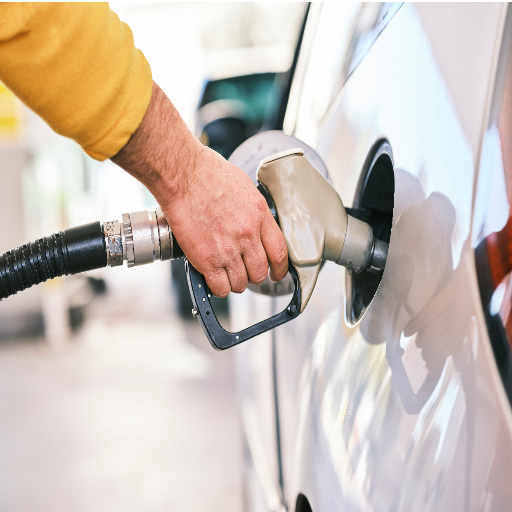
This statement about the Gasoline profit margin falling short when compared with the revenues generated from fuel sales is accurate. Considering income from convenience store sales, such as snacks, soft drinks, and other sundries, it constitutes the greater part. Although stations appear to sell gasoline for almost nothing, gaining just a few cents per gallon due to heavy operating costs and wholesale fuel prices, such operating costs comprise rent, utilities, wages, and credit card fees. Hence, with revenue from non-fuel sales being their mainstay, ensuring profitability leaves ample importance staring at their convenience store.]
Typical Profit Margins Explained
Gas station margin earnings can fluctuate significantly due to factors such as geographic location and competition. On average, considering operating costs, the net profit margin of a gas station is generally low, ranging from 1.4% to 3%. Although the sales of fuel extensively draw in customers, a low gross profit margin of approximately 10-15 cents per gallon is realized from the sale of fuel. This, however, can vary depending on the specific circumstances within the oil industry, including transportation costs and the fluctuations in demand for fuel due to seasonal changes.
To complement the tight margins on fuel, non-fuel sales from convenience stores account for the bulk of overall profits. Selling beverages, snacks, and prepared foods with profit margins ranging from 30% to 60% has provided an additional layer of protection to the ultimate income. Services such as car washes, ATM fees, and lottery ticket sales contribute to the income, with some car washes offering a profit margin of up to 50%.
The location also assumes significant importance in terms of profit. Highway-side or urban stations are best suited for large volumes of both fuel and convenience store sales. In contrast, more rural stations can experience inconsistent revenues due to lower customer traffic. Despite all the challenges of the industry, the gas stations will remain lifeline businesses by diversifying revenue streams and focusing on high-margin products.
Factors Influencing Profitability
Fuel Prices and Supply Chains: Setting the price of fuel determines the prices of other items at a gas station. This means that during periods of rising crude oil prices, gas stations may have thinner margins as they strive to maintain a competitive price, with customer loyalty being a paramount concern among them. Then again, any disruptions to the supply chain, from gathering to distribution, including natural disasters or geopolitical instability, cause the availability of fuel stocks to fluctuate upward and downward, so it depends on the pricing of fuel and, in turn, on income generation. Fuel sales typically account for around 60-70 percent of the net income of an average station, but gross margins on fuel tend to be relatively slim, at about five to ten percent.
Convenience Store Sales: In the gas station business, convenience stores are a key source of profit. High-margin items, such as snacks, drinks, and tobacco, produce more total profits than fuel does. Americans spend nearly $67 billion on convenience store purchases each year, with prepared foods and beverages among the leading product categories. Promotions, loyalty programs, and product variety would help push revenue from these channels.
Technology Integration: Technology isn’t going to stop changing gas stations for at least a few more years. Digital payments, automated fuel pumps, and customer-facing apps all enhance operational efficiency and improve the customer experience. Offering discounts and a digital loyalty system incentivizes potential consumers to visit stations and redeem rewards, thereby establishing a genuine business opportunity for repeat trade through customer loyalty programs. Stations with an EV charging set-up will continue to cater to the current surge of interest in alternative fueling options, maintaining their relevance within an increasingly competitive market.
Location and Accessibility: Getting gas stations right is all about location. Those near main highways, city centers, and those with little genuine competition are winners. For example, those located on busy highways seize interstate traffic and will sell convenience store items. Easy entryway and good parking will also encourage frequent visits from local people and passing customers.
Consumer Behavior and Trends: Another driver of gas station profitability. Declining traditional fuel demand in some regions, including the adoption of hybrid and electric cars, puts businesses under pressure to diversify with EV chargers and value-added services. A rise in health-conscious consumers has led to increased demand for healthy food options, prompting convenience stores to expand their offerings beyond traditional snacks. Adapting to these trends is essential for future viability and profitability.
Unraveling all these factors gives gas station owners additional room to maximize their revenue and compete fiercely in a dynamic environment.
Comparing Gas Sales to Convenience Store Sales
It appears to be a name for a pharmaceutical or industrial product. Gasoline sales are perhaps the largest source of income for any station, but fuel profits traditionally remain relatively low due to fluctuations in oil prices and intense market competition. Convenience stores, in contrast, offer the best margins, allowing their operators to earn greater profits from non-fuel sales.
According to recent industry reports, convenience store sales contribute around 30 to 40 percent of total revenues for many gas station operators. Still, these sales account for more than 60 percent of their net profit. Popular items such as snacks, beverages, lottery, and prepared foods draw a broad customer base, primarily seeking fast and easy solutions. Additionally, emerging product categories such as premium coffee, plant-based snacks, and grab-and-go meal kits help attract the fast-growing population of health-conscious, time-pressed consumers.
Trends indicate that customers who visit gas stations solely for fuel are more likely to enter, provided there are attractive promotions, loyalty points, or highly recommended selections. The upside of this cross-sell potential suggests that it’s essential to develop the convenience store experience as a perfect complement to the core fuel sale, yielding a good return on every transaction. Competitive fuel prices, combined with an attractive in-store format, will keep gas stations relevant and profitable in this evolving retail landscape.
The Role of Convenience Stores
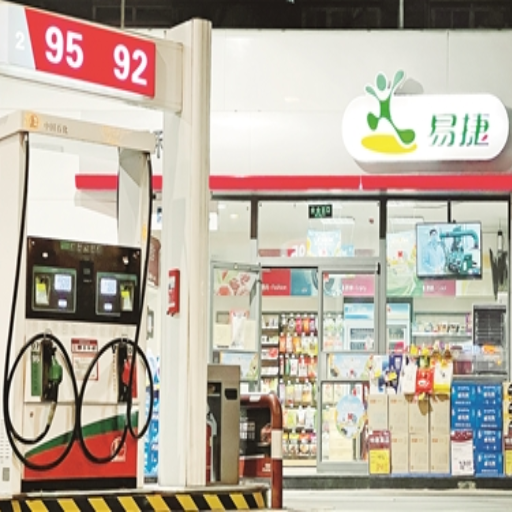
Since they offer quick, on-the-go shopping options, convenience stores have contributed to enhancing the customer experience at gas stations. Essentially, they sell a wide range of items, from essentials to snacks, beverages, and other products that customers may need on the go. These stores also serve as a secondary outlet for sales that complement fuel services, offering an all-around ambiance that stimulates return visits and fosters customer loyalty.
Why Convenience Stores Are Important to Gas Stations
The convenience stores are considered by many to be a generator of profits for contemporary gas stations. According to recent records, the US convenience store business, which includes sales of snacks, beverages, and other essential items, generates approximately $254 billion annually. This merely builds up their existence as a secondary source of revenue, parallel to fuel sales, where margins tend to be tighter due to fluctuations in oil prices.
Setting trends in response to changing customer preferences, these stores offer a fast, one-stop shop outlet. Over 93 percent of Americans live within ten minutes of a convenience store, creating a platform of accessibility and influence that affects their daily lives. Additionally, a significant portion of in-store sales stems from impulse purchases, such as lottery tickets, snacks, or soft drinks, which contribute to profitability.
By integrating modern techniques, such as self-checkout kiosks and mobile ordering, convenience stores offer faster and more efficient transactions. In addition, many stores now serve gourmet coffee, fresh food, and even provide delivery options that appeal to a broader demographic, increasing customer satisfaction. These strategies not only generate more income for the store but also help establish a strong profile for a gas station in a highly competitive arena and foster long-term customer retention.
Sales Strategies for Maximizing Profit
Dynamic Pricing Models: Implementing dynamic-pricing models can significantly enhance profitability. Based on real-time market trends and changes in demand, gas stations could raise fuel prices to maximize revenue while staying competitive. Research suggests, for example, that prices raised during peak commuting hours can positively affect sales-driving growth, without the demand side resisting.
Upselling and Cross-Selling: Suggesting complementary products to customers can raise the value of purchases. Restricting the discount to beverage purchases along with fuel can enhance convenience store sales. Industry studies indicate that cross-selling can increase sales by as much as 20%, making it a highly viable strategy.
Loyalty Programs: A well-designed loyalty program encourages repeat visits and boosts sales volume. Incentives of a points-based nature, ranging from discounts to exclusive offers for regular customers, foster engagement. Some reports have noted that businesses with such programs experience a 5-10% increase in retention rates compared to those without them.
Enhanced Customer Experience Through Technology: New payment methods and mobile applications that ease the transaction process also provide engagement options. Mobile apps can track rewards, offer personalized deals, and alert users to changes in fuel prices, all of which have been shown to boost user retention, ultimately leading to increased sales. Moreover, fun features in kiosks would be a great way to smooth out the purchasing process for customers.
Focus on Sustainable Practices: Sustainable practices appeal to a growing segment of individuals who are mindful of the environment. This may involve offering electric vehicle (EV) charging stations in addition to conventional fuel options, or ensuring that convenience stores stock organic and environmentally friendly products. Businesses that adopt a green marketing approach report considerable growth in customer preference and brand trust.
When implemented correctly, these sales-building strategies can enable gas stations and convenience stores to establish stronger brand loyalty with their customers and gain a firm foothold in the market.
Impact of Convenience on Customer Choices
Convenience is key when it comes to prioritizing customer decisions, especially in today’s fast-paced world. Studies reveal that more than half of the customers pick a place to shop or refuel based on speed and convenience. Drive-thru, parking options, or self-checkout stations significantly alter the dynamic of customer experience by minimizing wait times and simplifying processes. Additionally, mobile applications that enable customers to pre-order or pay have become significant factors, as recent data shows that customers are 30% more likely to remain loyal to companies with such technological offerings.
For a gas station and convenience store, combining multiple payment options, including digital wallets, cemented convenience as a dominant motive in customer choice. Studies indicate that approximately 70% of consumers would be more inclined to return to places that offer integrated services all in one stop. By responding well to convenience needs, the company stands to meet consumer expectations while firmly cementing long-term satisfaction and loyalty.
Gas Station Owners’ Perspectives
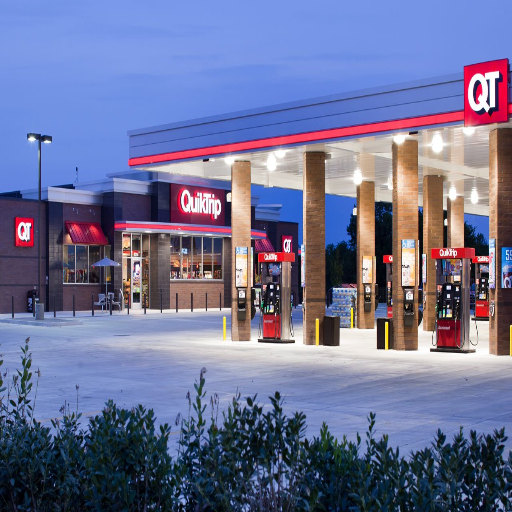
Customers are owners, so the key is convenience. Additional services, such as car washes, food, and digital payments, are believed to enhance both customer satisfaction and foot traffic, as well as sales. By keeping everything under one roof, owners would ensure greater customer loyalty and remain competitive in this fast-paced environment.
Insights from Station Owners on Profitability
Gas station success depends on a wide range of strategic considerations, and the ability to adapt to market trends is vital. Many operators suggest that fuel sales bring customers to the location, but the margins are thin. Instead, most profit is generated from ancillary payment options, including convenience store sales, premium car wash offerings, and loyalty programs.
Non-fuel income has become increasingly relevant lately, with recent data indicating that the average contribution from convenience store profits is approximately 60 percent for many outlets. High-margin items such as snacks, beverages, and ready-to-eat meals consistently outperform fuel sales. Those stations integrating newer technologies, with advancements such as mobile payments and app discounts, may find that customer retention and augmentations in overall transactions have placed them in a unique position.
Regarding positioning, EV charging infrastructure is rapidly emerging as a potent source of profitability. Smart owners are thus investing in EV chargers to cater to the growing EV owner base and generate additional revenue streams while branding their stations as ‘future-ready’. By diversifying services and adopting darn-good solutions, owners can march on profitably and maybe even prosper.
Challenges Faced by Gas Station Owners
Gas station owners face a complex and ever-evolving industry, presenting numerous challenges that directly impact their profitability and sustainability. Among these, the volatility of fuel prices ranks the highest: random disruptions to the global supply chain, geopolitical tensions, and fluctuating crude oil costs all have their say, at times, changing from hour to hour. Hence, inconsistent profit margins may arise from abrupt changes, particularly in periods where consumer demand for traditional fuels experiences a gradual decline.
And somehow, the EV movement remains perhaps the most severe threat to the gas station business. The sales of EVs are forecasted to grow to over 50% of global new sales by 2035, thereby sharply reducing gasoline demand. Over the past few decades, during which gasoline demand is contracting, gas station owners face pressure to respond rapidly by investing in alternative energy solutions, including setting up EV charging stations, which are not inexpensive to begin with.
Apart from these, regulatory compliance often gets in the way. Environmental regulations, which impose increasingly stringent demands for fuel quality standards and emission reductions, effectively place substantial ecological liabilities and operational impediments on gas stations. From a financial standpoint, improving existing infrastructure to meet the intent of such legislation would certainly demand hefty capital investment.
Labor shortages and rising wages also become an issue. Keeping skilled employees increases operational costs, which adds more pressure to budgeting, especially for small, independent gas stations competing with big chains for higher pay and more lucrative benefits.
Ultimately, there has been a shift in general consumer behavior toward greater convenience and digital solutions. Customers want enhanced experiences, including mobile payments, app-based rewards, and more. Any owner of a gas station who is slow to implement such technology risks losing the business to competitors that better align with modern consumer expectations.
Dealing with these issues would, therefore, require ingenuity, strategic investments, and a commitment to staying ahead of market trends. Once gas station owners begin to adapt proactively, they will have secured a way to thrive in the fast-changing business world.
Long-term Strategies for Success
Adopt Renewable Energy Solutions: Renewable energy is a very crucial long-term strategy for gas station owners. Since EV sales continue to increase globally, it has become increasingly important to install EV charging stations. Recent reports show that by 2030, EVs could be 40% of the car sales globally. Additionally, integrating solar panels with the station infrastructure helps reduce operating costs and enhance environmental sustainability, thereby providing a competitive advantage.
Focus on Convenience through Digitalization: Digital payments and apps are revolutionizing consumer behavior. As the study reveals, approximately 79% of consumers prefer to use contactless payment methods when purchasing gas. Gas station owners can utilize technology to their advantage and offer app-based loyalty programs that help retain customers while also gathering valuable data for targeted marketing.
Diversify Revenue Streams: More on-site services, such as car washes, high-end food courts, or co-branded retail partnerships, can generate additional income. The market for automated car washes, for instance, is projected to reach $6.6 billion by 2027. Diversification enables gas stations to cater to a broader range of customer needs, making them more versatile and profitable.
Focus on Sustainability Practices: Consumers are increasingly drawn to establishments that align with their values, particularly those related to sustainability. Gas stations that reduce their use of single-use plastics, responsibly manage waste, and actively promote fuel-efficient options would attract environmentally conscious customers. Biofuel options could also provide further support in maintaining the growing demand for greener routes.
Investing in Training and Customer Service: Providing excellent service is one thing that sets a business apart in today’s competitive environment. Employees must be trained in customer service standards and updated on emerging technologies, including EV charging and app integration, to deliver an excellent service experience. Nearly 58% of the customers are willing to give an extra amount for that superior experience, so it truly sets the tone for anyone who wishes to run a customer-centric operation.
With these choices made, gas station owners can future-proof their businesses, ensuring demand in changing market dynamics while maintaining long-term profitability.
The Economics of Gas Stations
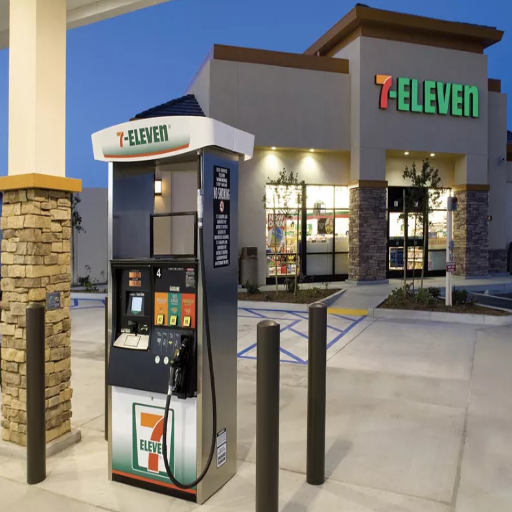
Gas stations operate on marginal profits, with the bulk of their earnings coming from fuel sales. Still, there is usually little profit to be made from fuel sales due to fluctuations in oil prices and market competition. Increasingly, they profit from sales from another channel—the convenience store —plus an array of other services, such as car washes. Convenience items, such as snacks and beverages, generally yield a higher margin than fuel, making them a significant revenue source. Controlling costs effectively and offering diversified services can help a gas station owner stay afloat amid changing market trends.
Summarizing Profitability Factors
Gas station profitability is a compound of earnings from fuel sales, convenience store revenues, and some supplementary services. Fuel sales are traditionally thin-margined, profits being largely volume-dependent, rather than price-per-gallon-dependent. There are industry reports that most likely put the average profit margin for gasoline sales at 2-3%; however, varying prices in the oil market might significantly affect those figures.
Convenience store operations provide a more secure revenue stream, accounting for as much as 60% of a gas station’s overall profits. Snack foods, drinks, and fast foods can be sold at profit margins of 30-50% to some extent. A recent study has shown an increase in consumer spending at convenience stores, driven by the growing demand for quick and convenient options.
Besides fuel sales and retail, certain gas stations increase their revenue by providing secondary services, such as car washes, tire air, and car delivery. For example, an operation that runs an automated car wash can expect approximately eight earnings per vehicle washed, resulting in a consistent profit stream. Such income diversification enhances profits and attracts a broader customer base, ensuring market adaptability.
Cost control, including reducing overhead costs and energy consumption, as well as improving labor efficiency, is a core technique for enhancing net margins. The integration of technology, such as digital payments, inventory management, and increasingly attractive information systems, which underscore the latest consumer expectations, is being recognized by gas station operators as workstreamlining tools.
The Future of Gas Station Profitability
The rapidly evolving energy scenario is now offering newer avenues for profitability and posing newer challenges to an operational gas station. With a global push towards renewable energy and EVs, conventional fuel sales are expected to keep declining for another few decades. Reports indicate that the EV market penetration is expected to reach 60% by 2040. This large-scale penetration would not go well with fuel revenue generation for the conventional gas stations. Therefore, numerous operators have diversified, particularly by investing in EV charging stations, a market forecasted to grow at a CAGR of more than 25% from 2023 to 2030.
Convenience retailing remains a significant driver of profit. Data confirm that sales at convenience stores account for a substantial portion of overall revenues, with beverages, snacks, and pre-packaged meals presenting the highest margin opportunities. By expanding their product offerings and strengthening existing loyalty programs, stations can solidify customer retention and increase purchase frequency.
Furthermore, sustainability initiatives act as a differentiated focus area. Gas stations with solar panels, energy-efficient lighting, and other eco-technologies are not just cutting their costs but also riding on the green wave that appeals to the environmentally conscious buying community. These developments underscore that, in a rapidly changing business environment, innovation and adaptability will remain among the most crucial tools for maintaining and enhancing profitability.
Final Thoughts on Gas Sales and Revenue
Gas sales and revenues will have to be influenced by market trends and consumer expectations, in my view. Innovating around sustainability with the ability to serve changing needs will allow long-term profitability and keep businesses relevant within a competitive space.
Reference Sources
The Effect of Facilities and Service Quality on Customer Satisfaction of Gas Stations
Optimizing Number and Locations of Alternative-Fuel Stations Using a Multi-Criteria Approach
Comparison with Classification Algorithms in Data Mining of a Fuel Automation System’s Sales Data
Frequently Asked Questions (FAQs)
Do gas stations profit from gas sales?
Gas stations typically do not make a significant profit from gas sales. The profit margin on a gallon of gas is relatively small, often only a few cents. Station owners may rely more on the sale of convenience store items and other services to generate substantial profits.
How do gas prices affect gas station profits?
Gas prices can significantly influence the profit margins of gas stations. When prices rise due to increases in crude oil costs or government regulations, profits per gallon might not increase proportionately, leading to potential losses for station owners.
What role does the National Association of Convenience Stores play?
The National Association of Convenience Stores provides resources and advocacy for convenience store and gas station owners. They help navigate challenges related to gas prices, insurance, and other operational aspects that can impact profitability.
Do convenience stores inside gas stations contribute to profits?
Yes, convenience stores inside gas stations play a crucial role in overall profitability. Customers often go inside to purchase snacks, drinks, and other items, which can yield a higher profit margin compared to fuel sales.
What is the average profit per gallon of gas for gas stations?
On average, gas stations make only about 10 to 15 cents profit per gallon of gas sold. This small fraction of earnings often leads station owners to focus on boosting sales in their convenience stores for better financial returns.
Can gas stations incur losses on gas sales?
Yes, gas stations can incur losses on gas sales, especially during periods of fluctuating prices. If the cost to purchase gas is higher than the selling price at the pump, station owners may find themselves in a financially challenging situation.
How do external factors like insurance and government policies affect gas station profitability?
External factors, such as insurance rates and government policies, can significantly impact the profitability of gas stations. High insurance costs and regulatory compliance can eat into the already slim profit margins from fuel sales.
What happens to gas station profits when oil prices rise?
When oil prices rise, gas stations may face increased costs for acquiring fuel. Although they might raise gas prices at the pump, the profit per barrel may not grow enough to cover operational costs, leading to potential financial strain.
Are gas stations more profitable during road trip seasons?
Gas stations often see increased sales during road trip seasons, which can enhance their profitability. More travelers typically mean higher sales volumes, especially in convenience stores, as customers stop for bathroom breaks and snacks.





